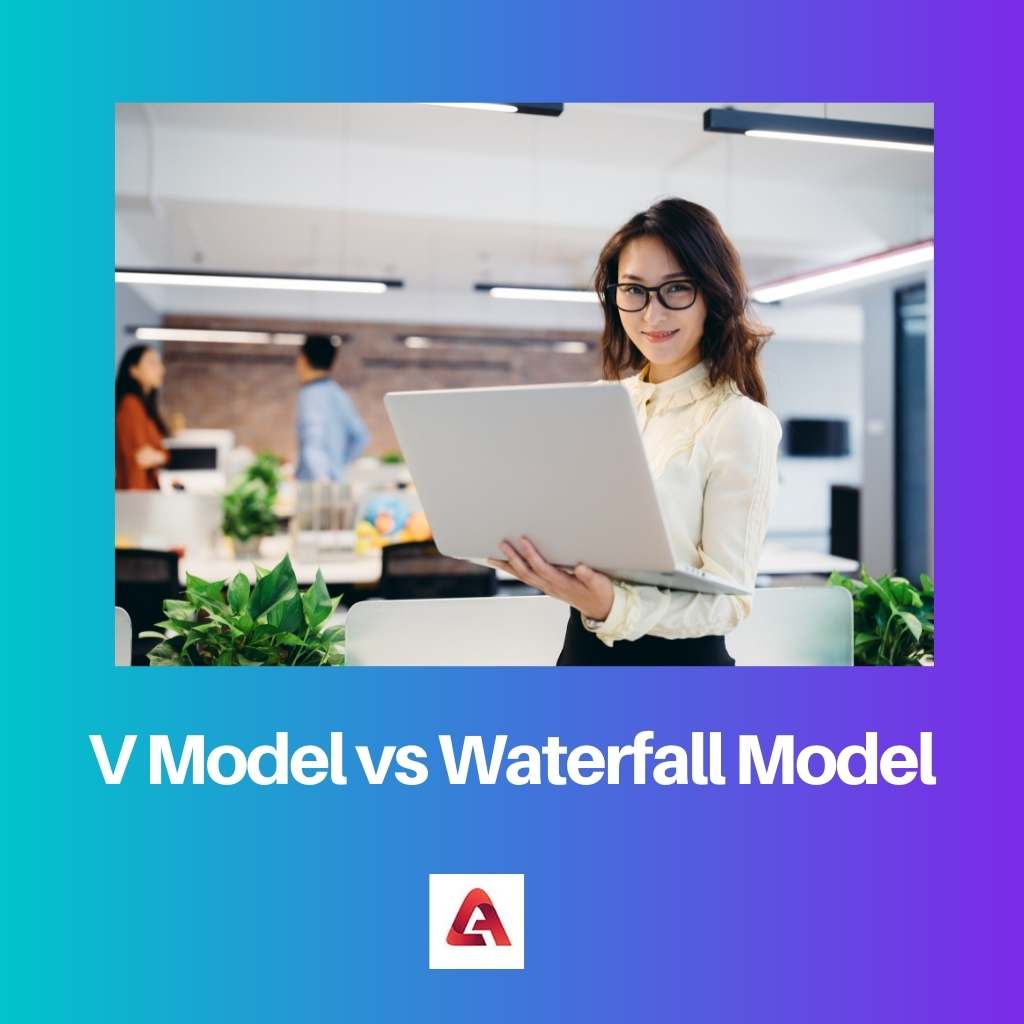Various software engineering techniques follow a certain procedure to build software. There are several advantages of following a certain sequence of processes that are followed to build software.
Various software programs and software models are made. Various procedures and techniques are used in the making of these programs.
However, for these purposes, many software engineers make use of several models that divide the activities and the number of tasks that are supposed to be performed during software development.
Two of these models are 1. V Model and 2. Waterfall Model.
Key Takeaways
- The V-model emphasizes verification and validation throughout development, while the Waterfall model follows a linear, sequential approach.
- V-model testing activities run parallel to development, while Waterfall model testing occurs after each development phase.
- The V-model allows for early detection and resolution of issues, while the Waterfall model may lead to the late discovery of defects, increasing project risk.
V Model vs Waterfall Model
The difference between the V model and the Waterfall model is that the waterfall model is not costly and is comparatively easy. On the other hand, the V model is costly and it is comparatively difficult. Also, the V model is flexible. On the other hand, the waterfall model is not that flexible.

The V model is a graphic illustration of the processes and tasks that are involved in software development in the shape of the alphabet “V”.
It is a comprehensive version of the waterfall model that is also used in software development. The entire diagram of the model is designed in a way that is easy to understand.
The waterfall model is also a graphic illustration of the tasks and procedures involved in software development by considering the result of the previous task, and each step is a task that is also a specialization along with others.
Initially, it was used in the construction industry as well as the product manufacturing industry.
Comparison Table
| Parameters of Comparison | V Model | Waterfall Model |
|---|---|---|
| Comprehension | More | Less |
| Cost | More | Less |
| Flesibility | More | Less |
| Steps | They move in non-linear form. | They move in linear form. |
| Success rate | High | Low |
What is V Model?
The V model is used in various software development projects. They are meant to be used as graphical illustrations that entail the sequential processes that are involved in the respective project.
It is in the shape of the alphabet “V” and has two axes: the horizontal and vertical axes.
The horizontal axis in the diagram represents the time for the entire project completion from left to right.
The vertical axis of the diagram represents the information about the project and the various steps that are involved in it from top to bottom.
It also entails the correlation between the various steps that are involved in the respective project.
Various phases and steps are involved in the entire process of making the V model. The first step is an analysis of the requirements.
The analysis is made according to the data collected and the user’s needs. A document regarding the users’ needs is formed, which is further studied by a system engineer from the system’s design.
Later on, after the completion of these processes, architecture and modules are designed.
There are several advantages of the V model. It saves a lot of time by providing ample information about design updates, planning etc.,
The software can be built in quite less time than expected as engineers can fix the bugs and errors by tracking them, data is not wasted, it is simple and is easy to understand.
What is Waterfall Model?
The waterfall model is a graphical illustration of the various processes and tasks required in software development.
It is used in the software world quite frequently. The approach of this model is quite sequential and linear.
The structure of the waterfall model is like a waterfall meaning that the blocks are cascading and linear. Herbert D. Benington first used it on 29 June 1956.
The entire model consists of several steps, and one must not move to the next step until the verification and reviewing of the earlier step are completely done.
The first step is similar to the first step that is included in the V model, it is capturing the analysed requirements in a document, and then the analysis for designing the project is done.
The entire architecture of the software is done in this step, and after reviewing it completely, engineers move to the coding stage.
After the code is complete, it is tested and reviewed, and if it contains any bugs or errors, then the debugging of the code is done immediately.
Engineers make sure that they debug the code as much as possible in this stage. After that, further operations like installing the software and running it.
Main Differences Between V Model and Waterfall Model
- The V model costs more. On the other hand, the waterfall model costs less.
- The V model is slightly more difficult than the Waterfall model.
- The V model is more flexible. On the other hand, the waterfall is less flexible.
- The steps involved in the V model move in a non-linear manner. On the other hand, the steps involved in the waterfall model move in a linear manner.
- The V model is in the shape of the alphabet “V” and becomes narrower as it goes down. On the other hand, the waterfall model is structured like a waterfall, and the steps are presented in a cascading style.
- The V model can be used again at a greater limit. On the other hand, the waterfall model can be used again at a restricted limit.
- The project that is done using the V model is more likely to succeed. On the other hand, the probability of the project that is done using the waterfall model succeeding is less.
- In software engineering, the V model is used more. On the other hand, the waterfall model is comparatively used less.
- https://link.springer.com/chapter/10.1007/978-3-642-02152-7_29
- https://www.researchgate.net/profile/Adetokunbo_Adenowo/publication/344194737_Software_Engineering_Methodologies_A_Review_of_the_Waterfall_Model_and_Object-_Oriented_Approach/links/5f5a803292851c07895d2ce8/Software-Engineering-Methodologies-A-Review-of-the-Waterfall-Model-and-Object-Oriented-Approach.pdf




